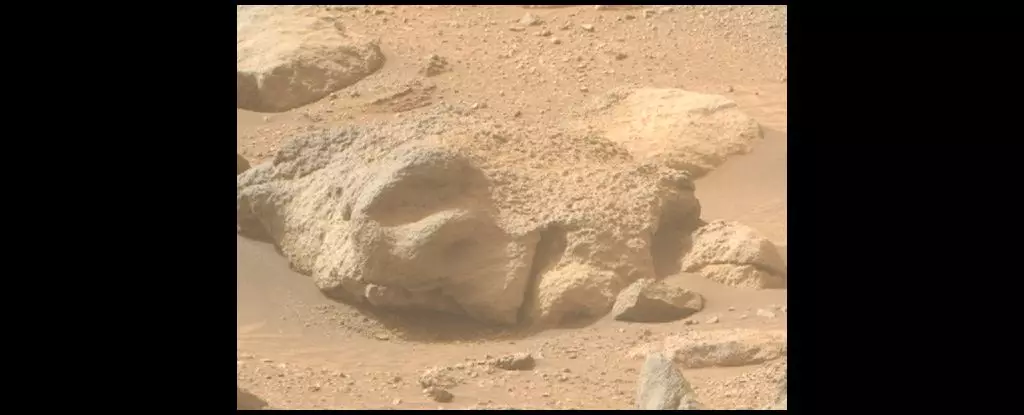Mars has long captured the imagination of humanity, thanks to its striking landscape, potential for harboring life, and mysterious features that seem to tease at a reality beyond our understanding. One of the more recent phenomena to spark intrigue is the uncanny resemblance of certain Martian rocks to human faces or heads—a psychological event known as pareidolia. This article delves into a peculiar instance of this phenomenon as captured by NASA’s Perseverance rover.
On September 27, 2024, the Perseverance rover transmitted back images that caused quite a stir among astronomers and casual observers alike. Among the stunning Martian vistas, one rock formation stood out, appearing hauntingly like a human head, weathered and sunken. The eerie image ignited discussions, prompting both fascination and incredulity. Yet, it is essential to clarify: this rock is not a vestige of an ancient Martian civilization or evidence of extraterrestrial life, but rather a naturally occurring formation of sedimentary sandstone. The unique configuration—its angle to the camera, weathered texture, and shadows—leads the human eye to anthropomorphize it, creating a false interpretation of reality.
Pareidolia, the psychological phenomenon where the mind responds to stimuli by perceiving familiar shapes in random objects, is an intrinsic part of human cognition. This proclivity is not exclusive to images from Mars; it manifests in a variety of contexts on Earth. From clouds resembling animals to intricate patterns on sandstone resembling faces, our brains are hardwired to instinctively recognize familiar shapes, particularly human features. This inclination stems from an evolutionary advantage: being able to quickly recognize faces could have been pivotal for survival, helping our ancestors identify friends from foes.
The Martian example of pareidolia is compounded by the stark, alien environment portrayed through images sent back by the rover. The arid landscapes, devoid of any apparent life, create an eerie backdrop where such interpretations are heightened. The fact that one can perceive a “head” in a stone fragment serves as a cognitive joke played by nature and our brains, illustrating how we apply our own experiences and perceptions to interpret foreign sights.
Exploring the psychological interplay between human perception and the images from Mars opens up a broader discussion on how we ascribe meaning to the cosmos. The ongoing fascination with pareidolia not only reveals our inherent need for narrative and connection but also illustrates our longing for companionship in the vast unknown of space. Despite our yearning to link these formations to a life long past, our scientific understanding unequivocally suggests that complex life never emerged on Mars, at least not in the sense that we recognize.
Though the thought of discovering remnants of alien civilizations is tantalizing, it is crucial to maintain a grounded perspective on the evidence presented. The various rock formations that evoke anthropomorphic images are merely natural phenomena sculpted by environmental conditions over millennia, rather than portals to a forgotten history.
As we continue to explore the mysteries of Mars through missions such as Perseverance, our understanding will undoubtedly evolve. Future crewed missions to the red planet are in the pipeline, driven by the ambition to investigate the myriad possibilities of life beyond Earth. In our quest for understanding, we might also stumble upon intriguing geological formations that challenge our perceptions and provoke imaginative insights similar to those we experience today with pareidolia.
Ultimately, the connection we build with these far-off worlds emphasizes our inherent curiosity and desire for exploration. What we discern in these alien landscapes—be it bizarre rock formations or patterns that echo our past—reflects as much about ourselves as it does about the universe we inhabit. If humanity is to leave its mark on Mars, perhaps the most profound legacy will lie not in the material artifacts we create, but in the stories and interpretations that we share about our findings, puzzling future Martian explorers along the way.

